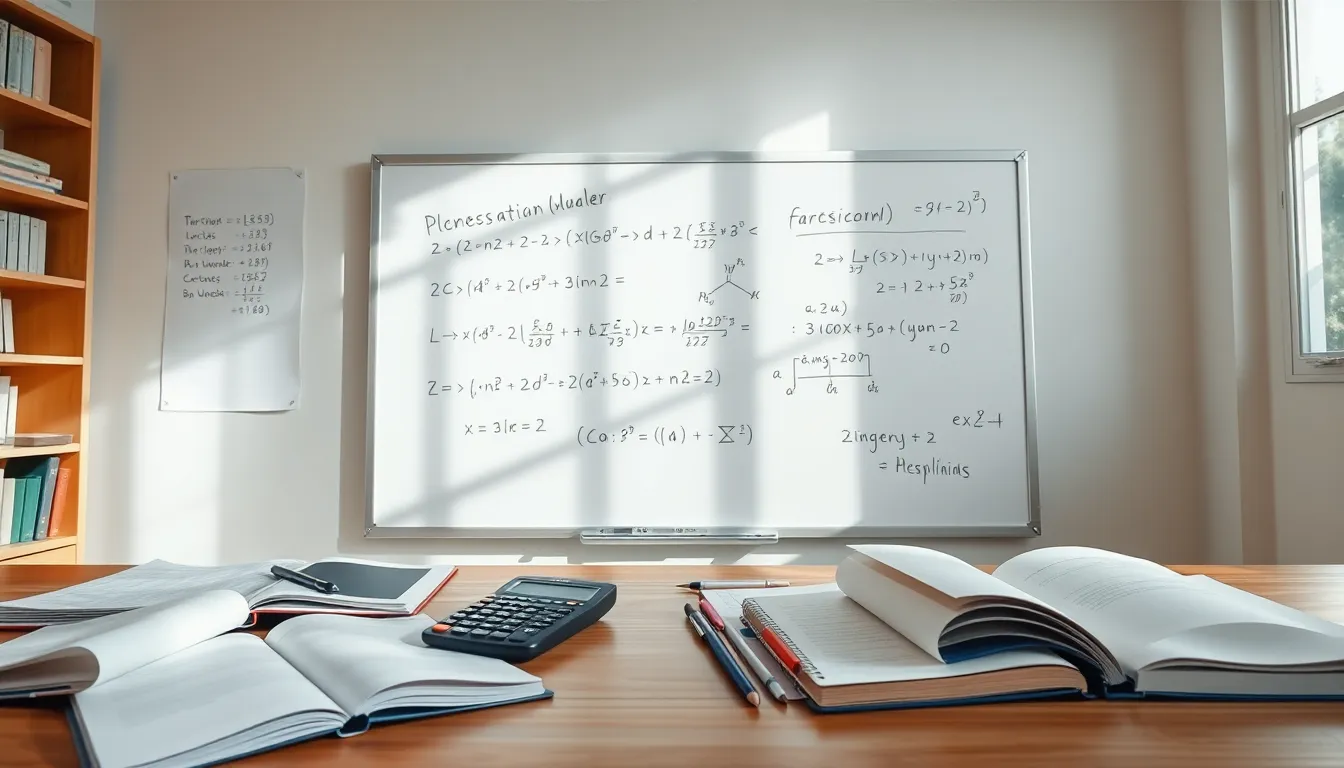In the world of algebra, equations can sometimes feel like a riddle wrapped in a mystery. Take the equation 7x−7= 9x−23, for instance. At first glance, it might look like a cryptic message from a math wizard. But fear not! This isn’t a spell; it’s an opportunity to flex those mathematical muscles and solve a puzzle that’s just waiting to be unraveled.
Table of Contents
ToggleUnderstanding the Equation 7x−7= 9x−23
This section delves into the components of the equation 7x−7= 9x−23. Analyzing the terms simplifies the solving process.
Breakdown of Terms
The term 7x refers to the product of 7 and the variable x. Similarly, the expression 9x represents the product of 9 and x. The constants -7 and -23 affect the equation’s balance. Both terms exist on opposite sides. This indicates a need for alignment to find x’s value. Recognizing these components allows for a clearer understanding of the equation’s structure. Each term plays a crucial role in setting up the steps for solving the equation.
Importance of Simplification
Simplifying the equation fosters clarity and efficiency. The initial goal requires isolating x. By rearranging terms, one can streamline the equation. Combining like terms, such as moving 7x to the right side, accelerates this process. Furthermore, eliminating -7 and -23 from their respective sides reveals the relationship between x and the constants. This approach not only clarifies the equation but also enhances problem-solving skills. Mastering simplification helps to tackle more complex equations in the future.
Solving 7x−7= 9x−23

Solving the equation requires isolating the variable x. The goal focuses on simplifying the expression and finding the value of x that makes both sides equal.
Step-by-Step Solution
First, combine like terms by moving 7x to the right side. This action results in the equation -7 = 9x – 7x – 23. Next, simplify the expression to -7 = 2x – 23. Then, add 23 to both sides, leading to 16 = 2x. Finally, divide both sides by 2 to isolate x, yielding the solution of x = 8.
Checking the Solution
To check the solution, substitute x = 8 back into the original equation. The left side becomes 7(8) – 7, which evaluates to 56 – 7, resulting in 49. For the right side, substituting gives 9(8) – 23, which simplifies to 72 – 23, also resulting in 49. Since both sides match, this confirms that x = 8 is the correct solution.
Common Mistakes in Solving Equations
Mistakes often occur when solving equations. Identifying these errors enhances understanding and improves problem-solving skills.
Misinterpretation of Variables
Misunderstanding the roles of variables can lead to incorrect solutions. Each variable represents unknown quantities, and confusing them can skew results. For instance, thinking two different variables are the same may cause errors during simplification. Equations like 7x−7=9x−23 rely on proper recognition of x to progress accurately. Sometimes, overlooked variables create significant issues as they may involve specific conditions. Remaining vigilant about variable identities ensures clarity throughout the solving process.
Arithmetic Errors
Arithmetic mistakes frequently disrupt the accuracy of solutions. Failing to perform basic operations correctly can derail an entire problem. Simple errors, such as miscalculating sums and differences, contribute to incorrect conclusions. For example, incorrectly subtracting or adding constants can yield misleading results. Precision in each step fosters accuracy, so double-checking arithmetic is vital for successful equation solving. Awareness of common calculations aids in minimizing mistakes and improving overall efficiency when approaching equations.
Real-World Applications
Mathematical equations like 7x−7= 9x−23 find relevance in various real-world situations. Understanding these applications helps solidify the knowledge gained from solving algebra.
Use in Algebraic Concepts
Algebra serves as the foundation for advanced mathematical concepts. The equation exemplifies how to manipulate variables and constants, aiding students in grasping essential principles. Variables provide a way to express relationships between quantities, while constants help in determining specific values. Analyzing equations prepares students for tasks such as graphing linear functions. Students learn to visualize data trends by converting algebraic expressions into graphical representations. Additionally, mastering such equations enhances critical thinking skills applicable in many academic fields.
Problem-Solving Scenarios
Real-life problem-solving frequently incorporates algebraic equations. For instance, budgeting a project involves calculating costs and revenues, which can be articulated through equations similar to 7x−7= 9x−23. This equation can represent different financial outcomes based on variable expenses. Furthermore, engineers utilize algebra to optimize designs, ensuring safety and efficiency. In healthcare, analyzing data about patient treatments can involve equations to predict outcomes. Solving equations translates numerical problems into actionable insights, proving invaluable in diverse professional contexts.
Solving the equation 7x−7= 9x−23 not only reveals the value of x but also highlights the importance of understanding algebraic principles. Mastering such equations builds a solid foundation for tackling more complex problems in mathematics.
Recognizing common mistakes and focusing on precision can significantly enhance problem-solving skills. As algebra continues to play a vital role in various real-life applications, its mastery equips individuals with the tools needed for critical thinking and effective decision-making in diverse fields. Engaging with equations like this one fosters a deeper appreciation for mathematics and its relevance in everyday life.




